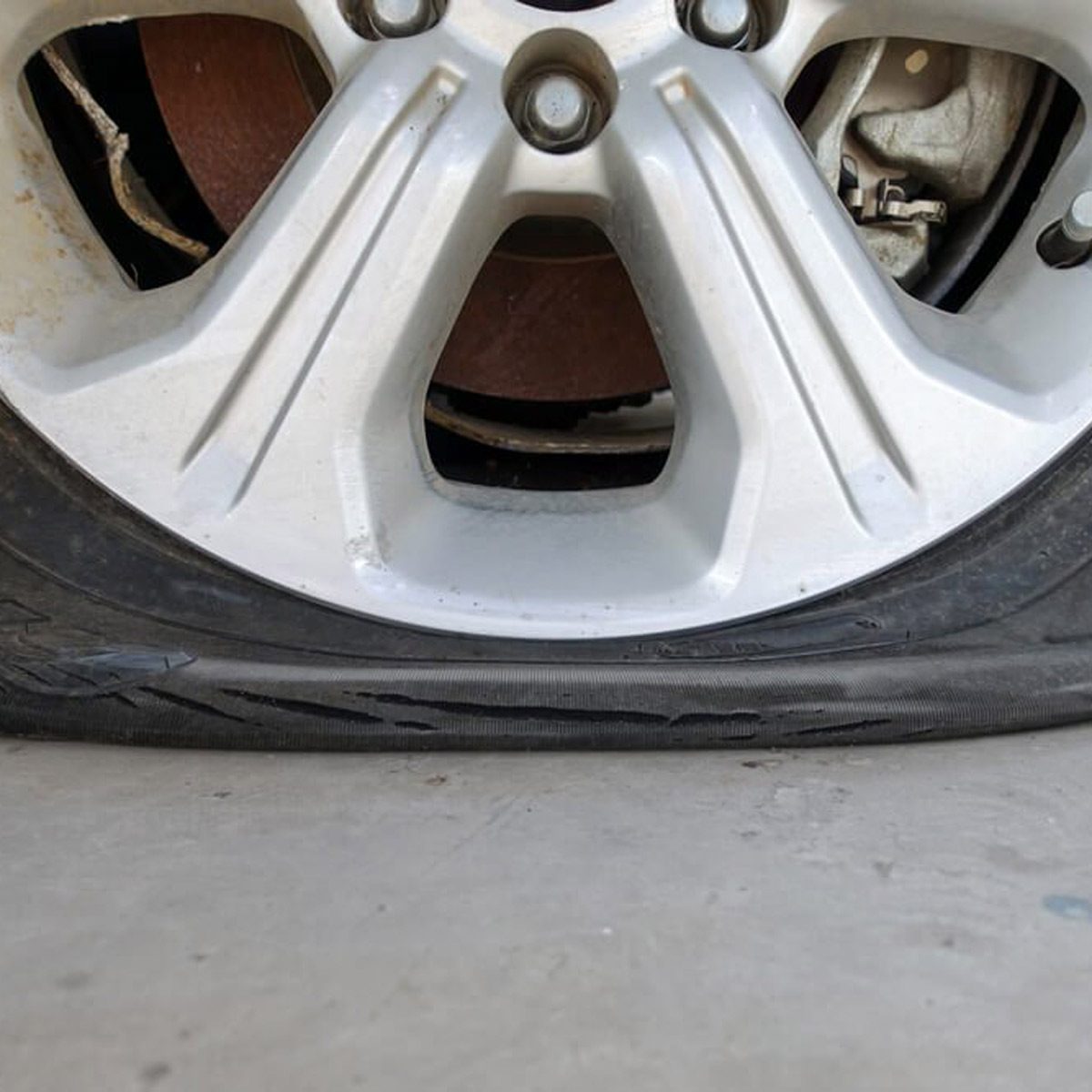One of your tires is deflated again and you can't find visible damage. What's going on? Read on to learn why that same tire keeps losing air.

Why Does My Tire Keep Going Flat?

Nothing is more annoying than stopping to fill an under-inflated tire every week or two. Of course the first thing you look for is a puncture or tear. It’s normal for tires to lose a few PSI (pounds per square inch) of air due to temperature changes. However, if temperatures remain consistent and your tires constantly lose pressure, there is a leak that needs attention. Age, exposure to contaminants and stress can cause parts of your tire and rim (wheel) to fail. But what do you do if your tire is not visibly damaged? Consider that one of these problems is causing your flat tire:
On This Page
Sharp Objects
Running over any sharp object can puncture a tire. A tiny nail can puncture a tire, then fall out, causing a slow two-to-three PSI leak per week.
Valve Stems
Made from rubber, valve stems can deteriorate over time. They also can be damaged from hitting a curb or even from an automatic car wash brush. Keep your valve stems clean and always replace the valve cap, but don’t overtighten it. Overtightening the cap can damage the valve core. Hand-tight is tight enough.
Ripped Tire
A ripped or torn tire is unsafe, especially if the rip is on the sidewall. Driving on a weakened tire, even if the leak is minor, is dangerous. Compound that with an under-inflated tire that can overheat and you’ve got a prescription for a blowout.
Bead Leak
The bead is where a tire seals itself to the rim. The bead on older tires, or tires that have “dry-rot,” may have decreased elasticity and no longer seal properly. Beads can also be damaged when a tire is mounted or dismounted without the use of tire lube and beads can become chaffed, due to a corroded rim. The only fix for a damaged bead that cannot seal to the rim is a new tire.
Rim Issues
Corrosion where the rim meets the tire bead is a common cause for a tire losing air pressure. Die-cast aluminum and magnesium alloy wheel are more susceptible to corrosion. Be sure your tire technician inspects the area where the wheel and bead seal before installing new tires. As well as being unsafe, even a new tire will never properly seal to a badly corroded wheel.
Often overlooked is wheel porosity, where air leaks through the rim itself. Usually caused by a poor casting or corrosion from using incorrect wheel weights, there is a proper, accepted way to repair this type of leak. Don’t inject your tire with tire sealant to fix a leaky rim. It can be extremely difficult to clean out and can ruin a repairable tire or tire pressure monitoring system sensor.
Over-inflated Tires
You are playing a dangerous game if you think that by over-inflating a tire with a slow leak, you will increase the time between fills. Besides a rough, noisy ride due to stiff sidewalls and tread, an overinflated tire wears quicker, and overall tire performance suffers. Rigid, overinflated tires are unstable, lose traction easily due to reduced tire-read-to-road contact area (think of a basketball) and make sidewalls vulnerable to blowouts when hitting a pothole.
Road Hazards
Anything that can damage a tire or rim — punctures from a nail, metal fragments, broken glass, a piece of wood, a cracked rim or sidewall rips from hitting potholes or a curb — are considered road-hazard damage. Only your tire technician can determine which of these are repairable.
So, as you can see, there are a lot of reasons why your tire can go flat. Inspect your tires and check air pressure at least once a month. Properly inflated tires last longer, wear more evenly and are safer to drive on.



















